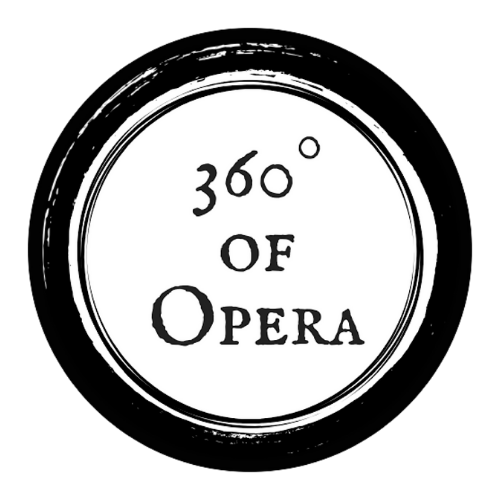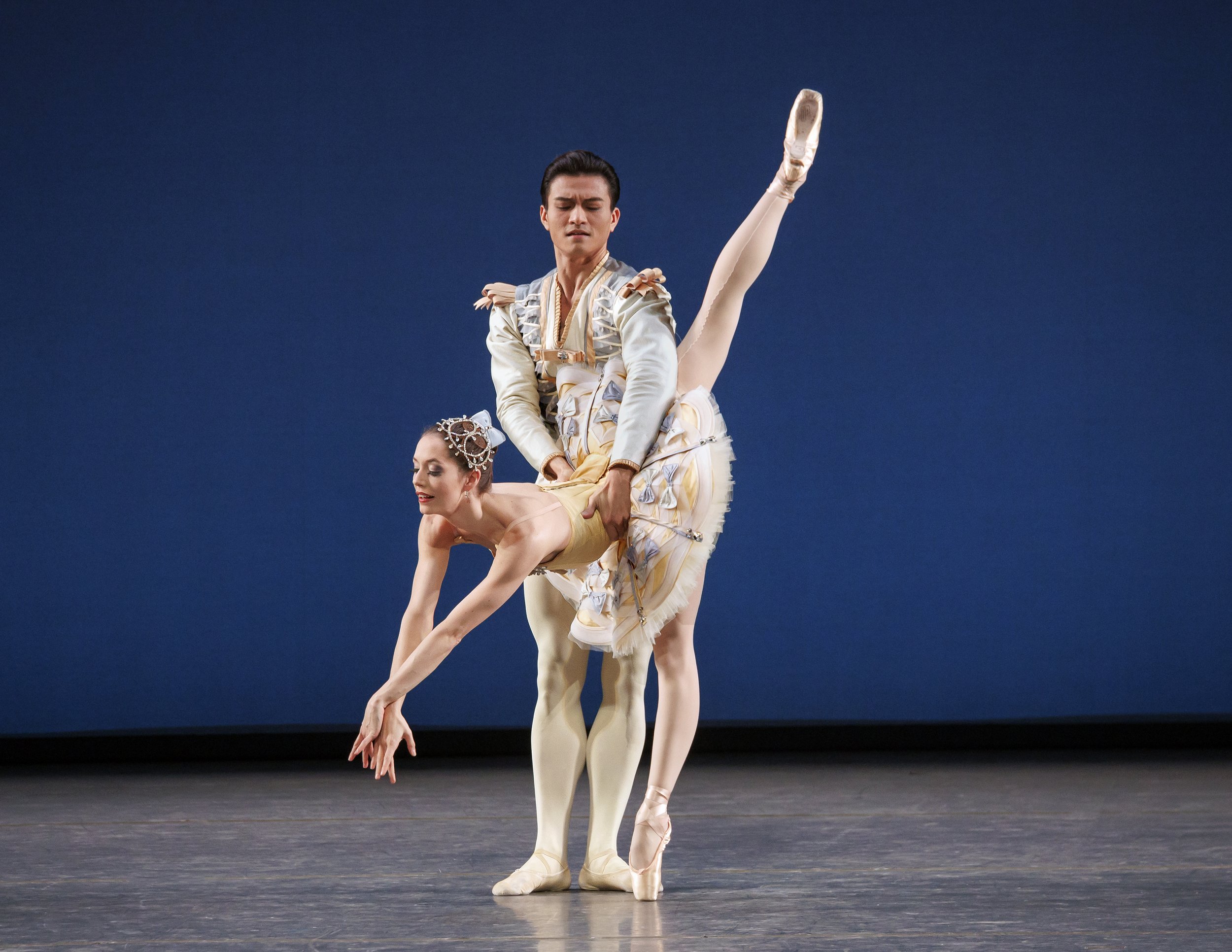NYC Ballet 2025: All Balanchine II
On May 9, 2025, New York City Ballet presented the first performance of this season’s 'All Balanchine II' program. The bill was comprised of two works which both deftly illustrated the choreographer’s esteem for classical music and his ability to create thrilling dances.
Opening the program was ‘Divertimento No. 15.’ Set to the Mozart piece of the same name, this selection made for an elegant opening thanks to the introduction from Andrew Litton and orchestra, setting the stage aurally before the curtain rose to the refined but energetic allegro. An ensemble of eight women carried this section through its measures of brisk piqués, measured penchés, and flowing port de bras until the entrance of the eight principal dancers, filling out the stage and leading to some fine partnering.
The ensuing section was a spirited gauntlet as the principals navigated the theme and six variations. Building from the more lyrical phrases from Charlie Klesa and Andres Zuniga, the variations were danced by Sara Adams, Erica Pereira, Unity Phelan, Emilie Gerrity, Chun Wai Chan, and Megan Fairchild. After this, the following minuet served a calmer but refreshing energy as the ensemble returned to weave a series of graceful textures against the gentle moderato of the string figures.
The andante section saw a number of charming pairings from the principals, relishing in softly-executed carries across the stage as well as frolicking gestures which evoked a playful sense of chase as the partners briefly split and attempted to rejoin their shared embrace. Bringing all these ideas together was the finale, where the ensemble quickly took to the stage in groupings, either flanking the principals or bolstering their movements as the latter filed off and on like a wave building to a grand conclusion.
Next on the program was ‘Vienna Waltzes.’ Drawing from the works of Johann Strauss II and Franz Lehar, this work was a stunning sampler of various scenarios and dances that at times felt like a narrative ballet due to its nuanced choreography, rich set, and feeling of cohesion between the sections. Opening to a remote, forest scene set to Strauss’ 1868 “G’Schicichten aus dem Wienerwald,” the harp pizzicatto delicately introduced the initial pair of seeming lovers, danced by Isabella LaFreniere and Aaron Sanz, taking a stroll away from the evening’s ball. A sudden peal of brassy fanfare split the dense, romantic air of their walk before the couple started their waltz proper, their spritely tempo occasionally slowing as they relished in the various turns of their dance. Joined by the ten pairs from the ensemble, this section featured a nice contrast between the courtly music and choreography and the natural, almost pastoral forest setting. The dancers spun to breathtaking heights until they unwound themselves back to the opening’s whisper of a romantic charge to close as the pair walked offstage arm in arm once more.
The next section, set to Strauss’ 1885 ‘Fruhlingsstimmen,’ carried with greater bounce as principals Indiana Woodward and Daniel Ulbricht quickly entered with spritely hops and flowing turns more suited to the woodland staging, exchanging brief measures before the earthy-toned ensemble joins in their fun and the pair is united for some exquisite, extended promenades which spoke to their ability to gracefully and quickly share weight with another. This section had more than just gaiety as Woodward’s solo measures saw her intimate a depth of nuance through her gestures as well as her expressions, creating a brief, contemplative atmosphere to enchant the audience before rejoining Ulbricht and the ensemble.
After this, the “Explosions-Polka’ took the energy to its peak as Brittany Pollack and Troy Schumacher delighted with rapid turns and high, tucked leaps to accent their vivacious measures of running winds and crashing cymbals. Their striped costume, powdered makeup, and high-cut skirts matched the whimsy of their choreography and evoked a sense of dell’arte comedy which brought great levity to this section and the work as a whole. Transitioning to a more regal setting was the ‘Gold und Silber Walzer,’ set to the 1906 piece by Lehar, where the stage gave way to a chamber of gold lights and accents which styled themselves in tree-like structures to create an opulent canopy for the pairs to waltz under. Principal dancer Aleck Knight entered this scene, briefly scanning the occupied couples reminiscent of Prince Sigfried looking for his mate, before the entrance of Miriam Miller took our full attention thanks to her richly-dark attire and queen-like demeanor. Their brief meeting saw them break off to their respective crowds before finally joining, as Knight waltzed about seemingly captivated by the air of mystique that Miller exuded through expression and gesture. This section seemed to me like the height of the arc which had been gradually building through the work, while lacking names and backgrounds, this particular pair conveyed an abundant sense of character which added much depth to the varied dances which keeps things driving along without too much rest.
Bringing things to a truly opulent spectacle was the finale, ‘Der Rosenkavalier: Erste Walzerfolge.’ Starting at a delicate texture from the strings as the stage transitioned to a darkened, mirrored ballroom, the couples slowly filed on and off stage before principal Unity Phelan was left alone, miming along with her invisible partner to the steps of the waltz before her reverence is joined from behind by Timothee Chamblee, who seamlessly takes her up before slowly whisking her about the stage to set her aloft in a brief solo once more. As the stage fills from the rich ensemble and the return of the principals from the earlier movements, the result was truly a work of art as the couples waltz in a gorgeous unison of flowing, white ballgowns and twirling, black tuxedos, effectively transporting the audience to a scene straight from imperial Vienna.
While differing in approach and treatment of their respective sources, the works on this night’s program truly succeeded in displaying Balanchine’s gift for musical setting and storytelling, with the nearly-full house repeatedly awash in applause from the audience.
NYC Ballet's Spring season is set to continue with their 'All Ravel' program, leading into their production of 'A Midsummer Night's Dream.' As the company readies to celebrate retiring principal dancer Andrew Veyette, lovers of dance won't want to miss these next few weeks of performances.
-written by Logan Martell





